Fukuoka seamlessly blends its modern architectural marvels with a rich cultural heritage, creating a city that captivates the senses. From the Fukuoka Port Tower’s breathtaking 360-degree views to the historic Kushida Shrine, home of the vibrant Hakata Gion Yamakasa festival, visitors can enjoy a delightful juxtaposition of old and new. As you stroll through the charming Kawabata Shopping Arcade, the aroma of traditional merchant culture mingles with the sustainable designs of ACROS Fukuoka, where nature and urban life coexist in perfect harmony. This dynamic city holds a treasure trove of experiences just waiting to be discovered.
Key Points
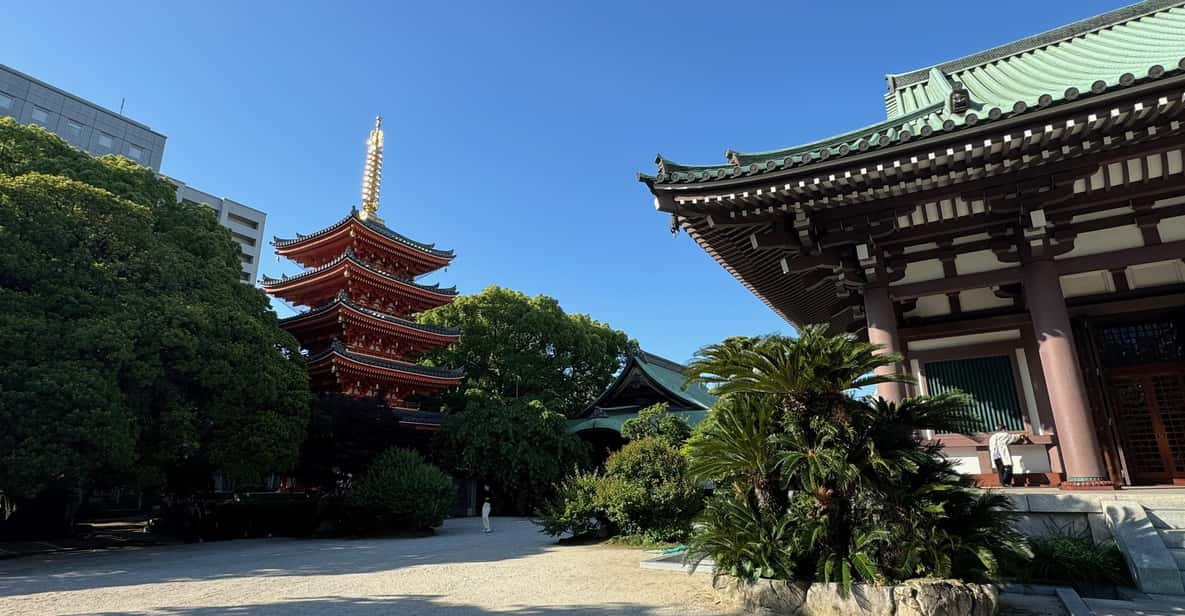
- Fukuoka’s Port Tower Observation Deck offers panoramic views of the city and Hakata Bay, serving as a beacon for ships entering the port.
- Kushida Shrine and the Hakata Gion Yamakasa festival showcase Hakata’s rich cultural heritage, featuring elaborately decorated floats and vibrant celebrations.
- The Fukuoka Machiya Folk Museum provides insights into the region’s pre-industrial merchant culture, with restored traditional townhouses and interactive exhibits.
- Kawabata Shopping Arcade, a historic merchant area, embodies the blend of old and new in Fukuoka’s commercial heritage, offering traditional wares and local delicacies.
- Fukuoka’s sustainable architectural marvels, such as ACROS Fukuoka, incorporate innovative green features, including extensive planted terraces and water recycling systems.
Fukuoka Port Tower Observation Deck
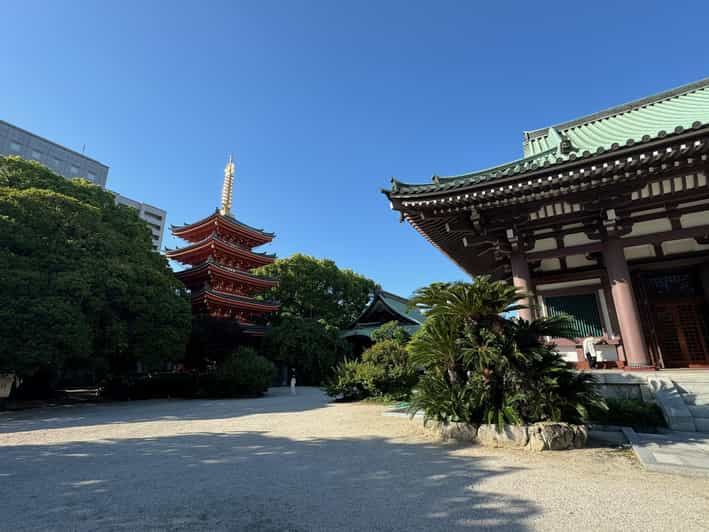
Ascending to the 73-meter observation deck of the Fukuoka Port Tower, visitors are treated to unparalleled 360-degree views of the bustling city and surrounding Hakata Bay.
Designed by the same architect as Tokyo’s iconic landmark, this tower offers a unique vantage point to admire Fukuoka’s skyline and the picturesque harbor.
On a clear day, one can spot the distant silhouettes of the Genkai Sea and the Shikoku mountain range.
The sleek, modern structure serves as a beacon, guiding ships into the port while providing an elevated perspective of Fukuoka’s blend of historic and contemporary architecture below.
You can also read our reviews of more tours and experiences in Fukuoka.
Kushida Shrine and Hakata Gion Yamakasa
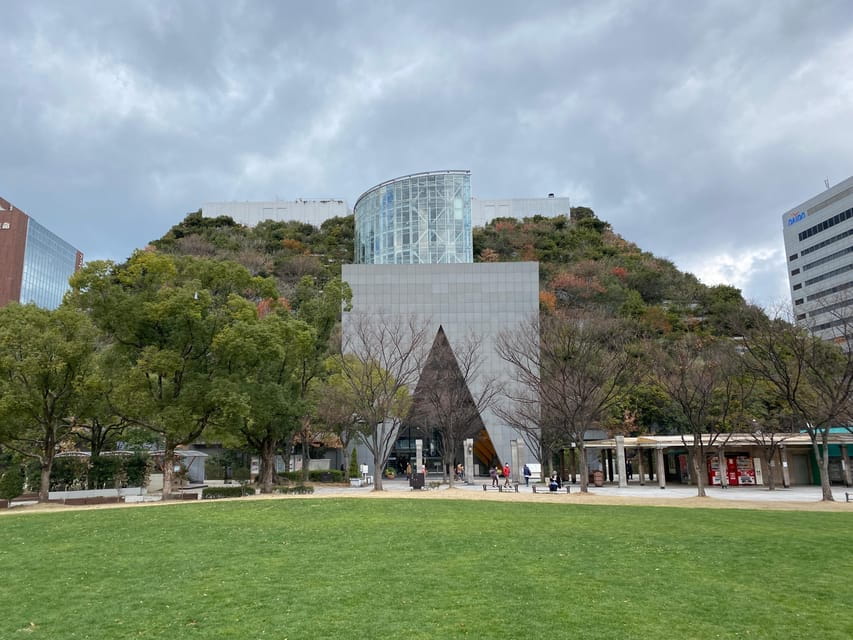
After taking in the panoramic views from the Fukuoka Port Tower, the tour now leads visitors to the Kushida Shrine, the chief Shinto shrine of Hakata and the home of the renowned Hakata Gion Yamakasa festival. The annual festival, held every July, features elaborately decorated floats carried through the streets by teams of men in traditional happi coats. Visitors can admire the intricate carvings and vibrant colors of the floats, as well as the impressive displays of strength and teamwork by the participants. The Kushida Shrine itself is a serene and peaceful oasis, offering a glimpse into Hakata’s rich cultural heritage.
| Feature | Description |
|---|---|
| Hakata Gion Yamakasa | Annual festival held every July featuring elaborately decorated floats |
| Happi Coats | Traditional garments worn by the float participants |
| Intricate Carvings | Detailed designs adorning the festival floats |
| Teamwork | Impressive displays of strength and coordination by the float carriers |
Fukuoka Machiya Folk Museum Experience
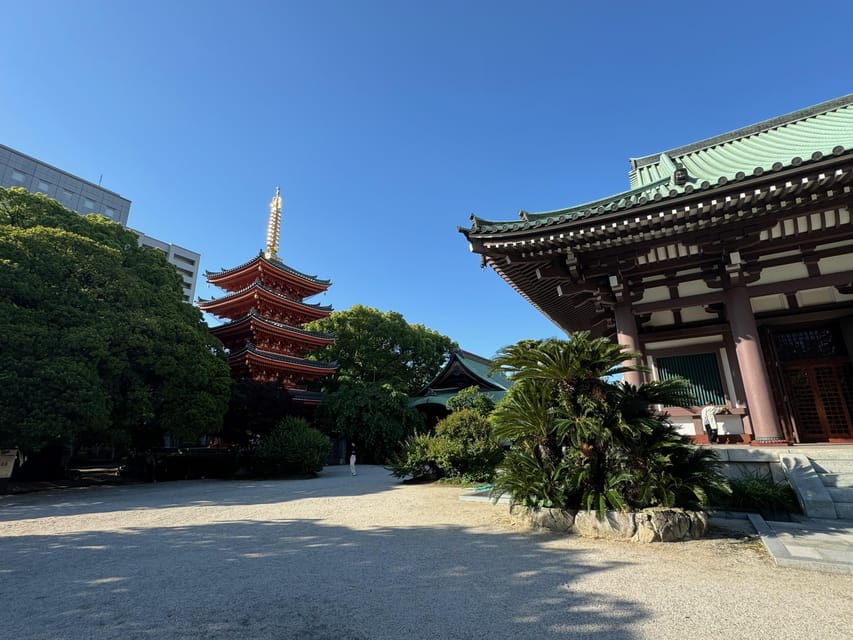
Next, the tour leads visitors to the Fukuoka Machiya Folk Museum, which offers a restored view of old Fukuoka before the industrial revolution.
The museum showcases traditional machiya townhouses, providing a glimpse into the daily lives of Hakata’s merchants. Visitors can explore:
- Ornate entryways with carved wooden beams and latticed windows.
- Tiled roofs and long, narrow floorplans typical of machiya architecture.
- Reconstituted living spaces, like the family room and kitchen, to understand local customs.
- Exhibits on the history of Hakata’s merchant culture and its evolution over the centuries.
The museum’s immersive experience transports guests back in time, fostering a deeper appreciation for Fukuoka’s rich heritage and the enduring traditions of its historic Hakata district.
Kawabata Shopping Arcade’s Historic Charm
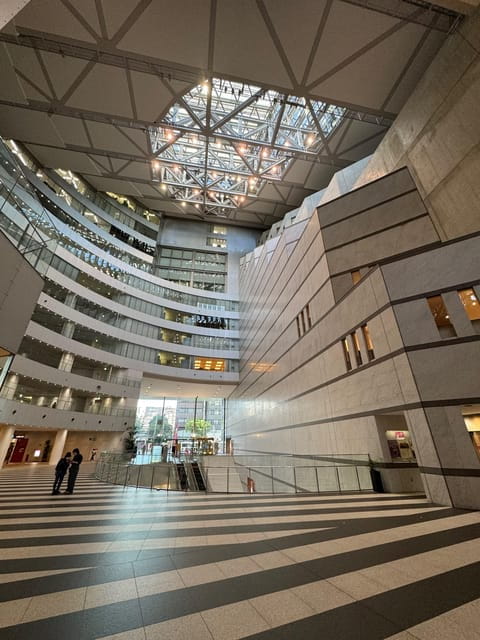
From the serene confines of the Machiya Folk Museum, the tour venture leads visitors to the bustling Kawabata Shopping Arcade.
This historic merchant area, dating back over 130 years, buzzes with activity as shoppers browse an assortment of traditional Japanese wares, local delicacies, and artisanal crafts.
The narrow, covered walkways invite exploration, with vendors hawking their wares and the scent of sizzling takoyaki wafting through the air.
Visitors can enjoy the lively atmosphere, stopping to sample regional specialties or admire the intricate woodwork and lanterns that adorn the shops.
Kawabata embodies the enduring spirit of Hakata, blending the old and new in a captivating display of Fukuoka’s vibrant commercial heritage.
Sustainable Design at ACROS Fukuoka
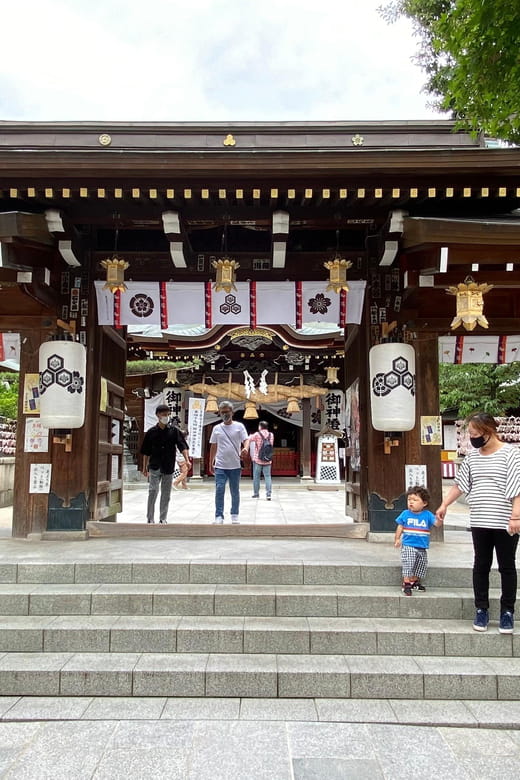
Towering over the cityscape, the ACROS Fukuoka Prefectural International Hall showcases a remarkable feat of sustainable architecture. Designed by renowned architect Emilio Ambasz, this building seamlessly integrates green spaces into its design.
Some key features of ACROS Fukuoka include:
- A series of planted terraces cascading down the façade, creating a lush, verdant appearance.
- A 15,000 sq. meter green roof that helps insulate the building and reduce energy consumption.
- Extensive use of natural ventilation and daylight to limit the need for air conditioning and artificial lighting.
- Innovative water recycling systems that reduce the building’s environmental impact.
This harmonious blend of nature and structure embodies Fukuoka’s commitment to sustainable urban development.
- Fukuoka: Private Eat Like a Local Food Tour
- Fukuoka: Takachiho or Minami Aso Customizable 1-Day Tour
- In Fukuoka! Guide to an Izakaya Only 100% Locals Know.
- Historic Fukuoka: Castles, Shrines & Canal City Walk
- From Fukuoka: Day Trip to Yamaguchi Akiyoshido Cave & Shrine
- Fukuoka: Mt. Aso Volcano & Kurokawa Onsen Review
Suiko Tenmangu Shrine and Alley
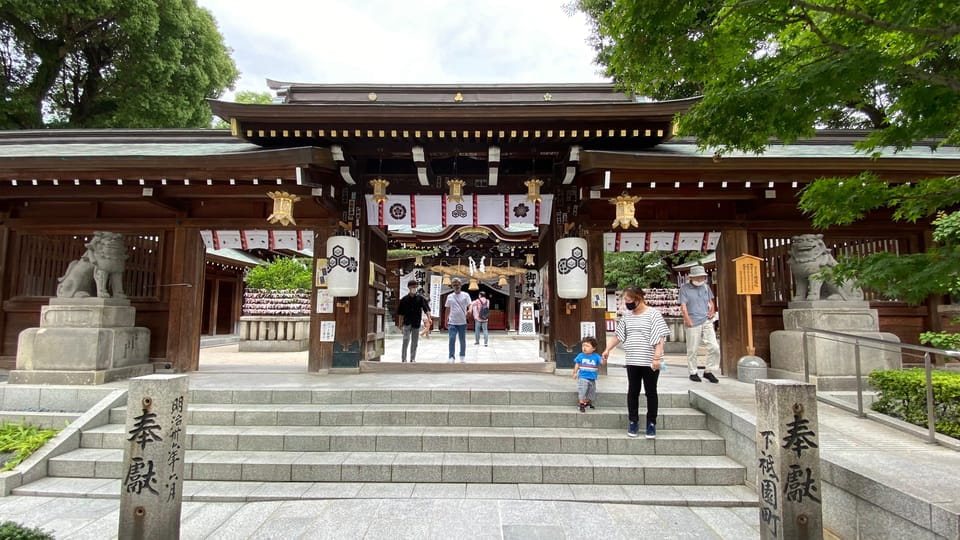
Tucked away among the towering office buildings of Fukuoka’s financial district stands the Suiko Tenmangu Shrine, a quiet oasis revered for its deity of scholarship.
Visitors step off the bustling streets into a serene alley, where they’re greeted by the shrine’s ornate vermillion gates and towering trees.
As they explore the tranquil grounds, they’ll discover intricate carvings, vibrant red-and-white Shinto lanterns, and the main hall housing the deity.
It’s a peaceful respite from the city’s energy, offering a chance to take in Fukuoka’s rich cultural heritage and reflect on the pursuit of knowledge.
Those seeking a moment of calm amid the urban landscape will find it at Suiko Tenmangu.
Red Brick Culture Center and Cafe
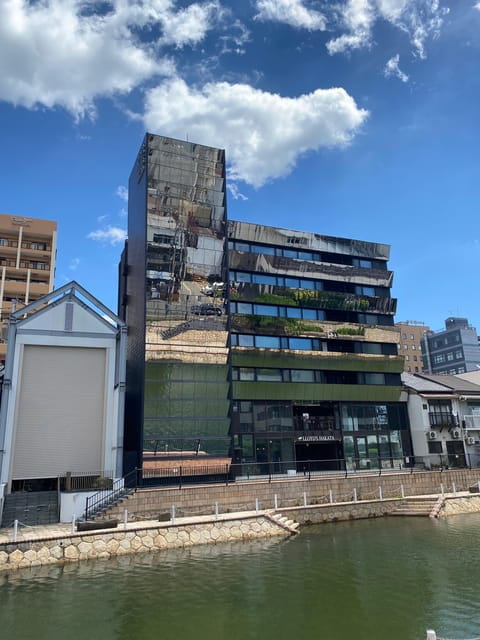
Nestled amidst Fukuoka’s bustling urban landscape, the Red Brick Culture Center stands as a testament to the city’s rich architectural heritage.
This historic building, completed in 1909, was once the home of the Nippon Life Insurance Company until 1966.
Today, it houses the Engineer Cafe, a unique dining experience that celebrates Fukuoka’s engineering legacy.
Visitors can:
- Admire the stunning red-brick exterior and ornate architectural details.
- Step inside the cafe and savor a selection of locally-sourced, innovative dishes.
- Discover the building’s fascinating history through informative displays and exhibits.
- Enjoy a cup of artisanal coffee while taking in the serene atmosphere of the alley.
Tochoji Temple’s Great Wooden Buddha
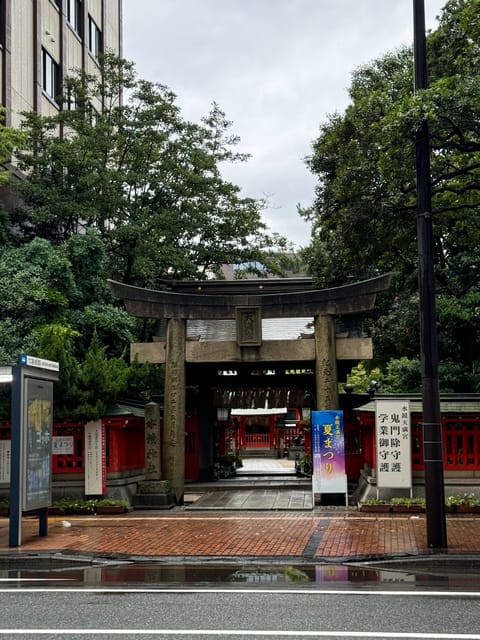
Among the numerous cultural and historical gems that dot Fukuoka’s landscape, the Tochoji Temple stands as a premier attraction, drawing visitors from near and far. The temple’s centerpiece is the awe-inspiring Great Wooden Buddha, a majestic 10.8-meter statue dating back to the 8th century. Visitors can marvel at its intricate details and feel the palpable spiritual energy that emanates from this impressive sculpture.
| Interesting Facts About the Great Wooden Buddha | |
|---|---|
| Height | 10.8 meters |
| Material | Carved wood |
| Date | 8th century |
| Location | Housed within the Tochoji Temple |
| Significance | One of the oldest and largest wooden Buddha statues in Japan |
The Great Wooden Buddha is not only a stunning work of art but also a testament to Fukuoka’s rich cultural heritage and the enduring power of faith.
Frequently Asked Questions
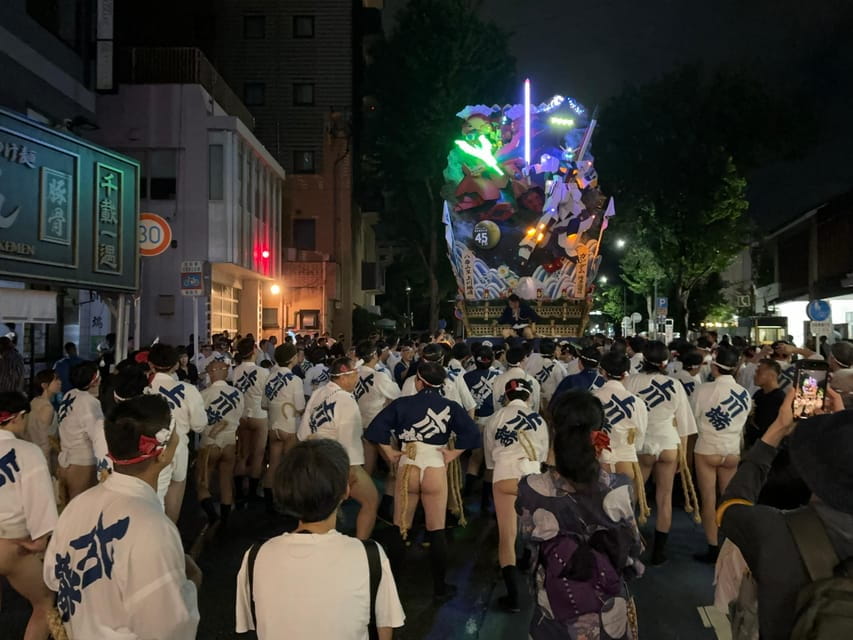
Is the Tour Wheelchair Accessible Throughout?
The tour is wheelchair accessible throughout, allowing visitors to explore Fukuoka’s highlights with ease. From the Port Tower’s observation deck to the historic sites, the experience caters to those with mobility needs.
Are There Any Dietary Restrictions for the Tour?
The tour doesn’t have any dietary restrictions, but it’s recommended to bring snacks or water if you have specific dietary needs. The walking tour focuses on sightseeing, not food experiences.
Can I Bring My Pet on the Tour?
No, pets are not allowed on the Fukuoka tour. The tour explicitly states that "Prohibited items: Pets" to ensure the comfort and safety of all participants. Guests should leave their furry companions at home for this walking tour experience.
Is There an Option to Extend the Tour Duration?
Unfortunately, the tour doesn’t offer an option to extend the duration. The 4-hour itinerary is fixed, allowing visitors to explore Fukuoka’s top attractions efficiently. Guests seeking more time can consider arranging a private tour or exploring the city independently after the guided portion.
Do Guides Provide Recommendations for Local Restaurants?
The knowledgeable guides provide personalized recommendations for delectable local cuisine, suggesting regional specialties and hidden-gem eateries that showcase Fukuoka’s vibrant food scene, ensuring tour participants savor the authentic flavors of the city.
Recap
Fukuoka’s architectural marvels and cultural heritage create a captivating tapestry. From the sweeping views of the Port Tower to the vibrant Hakata Gion Yamakasa festival, visitors are immersed in the city’s unique blend of modernity and tradition. Strolling through the charming Kawabata Arcade and marveling at the seamless integration of nature at ACROS Fukuoka, one can’t help but be enchanted by Fukuoka’s remarkable balance of progress and preservation.
More Tour Reviews in Fukuoka
- Kumamoto Castle Kusasenrigahama and Mount Aso Tour From Fukuoka
- Fukuoka to Fukuoka Airport (FUK) – Departure Private Transfer
- Private Transfer From FUKuoka Airport (FUK) to Shimonoseki Port
- Discover Inner Peace at Fukoji Temple Meditation Experience Tour
- SL Hitoyoshi Unveiling Tour
- Kyushu Day Trip to Takachiho Gorge and Shrines From Fukuoka
Not for you? Here's more things to do in Fukuoka we have recnetly reviewed
- Fukuoka Airport to Any Location Within Fukuoka Prefecture
- Private Tours of Fukuokas Most Difficult-To-Reserve Restaurants
- Full Day Private Shore Tour in Fukuoka From Fukuoka Cruise Port
- Kumamoto Castle Kusasenri Aso Crater and Aso Boys Scenic Train
- Discover Kumamoto With Aso Boy Scenic Train
- 5-Day One Way Bus Trip to North Hyogo From Fukuoka to Hiroshima
- YokaBus Kokura Castle Tea Ceremony and Japan Toilet Innovation
- Private Transfer From Sasebo Cruise Port to FUKuoka Airport (FUK)
- 6H Private Guided Tour to Fukuoka
- Private Transfer From FUKuoka Airport (FUK) to Miyazaki Port
- Private Transfer From Kumamoto Cruise Port to Fukuoka Hotels
- Private Arrival Transfer Fukuoka International Airport to Fukuoka City
